At the core of any great fitness program is the belief progress is possible at any age, and this year two of our dedicated team members brought this belief to life for their residents in Arizona with the launch of their Superpowers program. The superpowers program was designed to spotlight the strength and flexibility gains residents can achieve with the right tools, guidance, and encouragement. They set out to empower residents to discover their inner superpower through intentional training, and their outcomes were extraordinary.
Strength Superpowers:
Fitness Specialist Kiona Garza led the strength portion of the superpowers program. Kiona said “it has been a goal of mine to educate our residents about progressive overload and how the body can better adapt to gaining strength through it.” She added, “I know residents get comfortable with the weights they use but if they were to keep using the same weights they would become ineffective at helping them build strength”.
Kiona’s strength program was split into 3 phases: muscular endurance, hypertrophy, and strength. Using the leg press for their 3-rep max test, residents were challenged to increase their strength by at least 25% in two months. Every single one of her participants exceeded that goal and some even achieved as much as a 200% increase in strength.

One resident, Garret W., is a standout. Starting the program with a 115 pound 3-rep max, Garrett increased to 210 pounds which was an impressive 82.6% gain. He had a goal to get stronger for his trip to Israel to celebrate his 90th birthday, and not only did he meet that goal he exceeded expectations by navigating hills, rocky terrain, and stairs with ease. His tour guide was so impressed noting that he had never seen someone Garrett's age move with such agility and independence. Garrett is living proof that age is just a number when it comes to strength.
Flexibility: The Hidden Superpower
 Flexibility is often overlooked in fitness training, but Jabbar Harris another one of our dedicated fitness specialists knew just how powerful it could be. He led the flexibility portion of the superpowers program and guided residents through regular stretching routines designed to safely increase their range of motion, and comfort. One of his participants, Olivia Q., experienced dramatic improvements going from four inches short of her toes to reaching two inches past them - that's a 150% increase in flexibility! She shared with Jabbar that performing the stretches most days of the week not only improved her flexibility but also alleviated soreness in her lower back! Olivia's lower back discomfort went from a self reported “seven” to a “three”. Since completing the Superpowers program, Olivia has continued to incorporate stretching into her daily routine to maintain her new superpower.
Flexibility is often overlooked in fitness training, but Jabbar Harris another one of our dedicated fitness specialists knew just how powerful it could be. He led the flexibility portion of the superpowers program and guided residents through regular stretching routines designed to safely increase their range of motion, and comfort. One of his participants, Olivia Q., experienced dramatic improvements going from four inches short of her toes to reaching two inches past them - that's a 150% increase in flexibility! She shared with Jabbar that performing the stretches most days of the week not only improved her flexibility but also alleviated soreness in her lower back! Olivia's lower back discomfort went from a self reported “seven” to a “three”. Since completing the Superpowers program, Olivia has continued to incorporate stretching into her daily routine to maintain her new superpower.
The superpowers program wasn't about magic, it was about movement, mindset and momentum. This program truly helped the residents we serve realize that strength isn't reserved for the young, and flexibility isn't lost with age. Through education, encouragement, and personalized programming our fitness staff empowered residents to unlock their potential. To Kiona and Jabbar: thank you for your thoughtfulness and dedication to helping the residents that we serve discover just how powerful they are!


 As you approach your later years in life, exercise and movement can help combat some of the unpleasant effects of aging. There are many ways that you can exercise your body, but as you get older, how do you know what kind of exercise is the best and safest? The short answer is it depends. There is not just one kind of exercise that is the best. In general, incorporating aerobic exercise, strength training, flexibility, and balance work into your exercise routine will give you the most well-rounded benefits. Having the knowledge of the benefits of each type of exercise can help you determine what to prioritize based on your own individual needs.
As you approach your later years in life, exercise and movement can help combat some of the unpleasant effects of aging. There are many ways that you can exercise your body, but as you get older, how do you know what kind of exercise is the best and safest? The short answer is it depends. There is not just one kind of exercise that is the best. In general, incorporating aerobic exercise, strength training, flexibility, and balance work into your exercise routine will give you the most well-rounded benefits. Having the knowledge of the benefits of each type of exercise can help you determine what to prioritize based on your own individual needs.
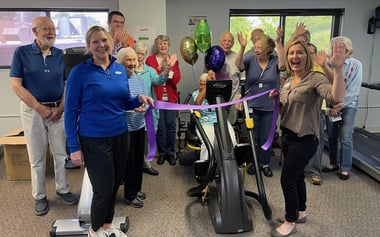 Westminster Village of Terre Haute
Westminster Village of Terre Haute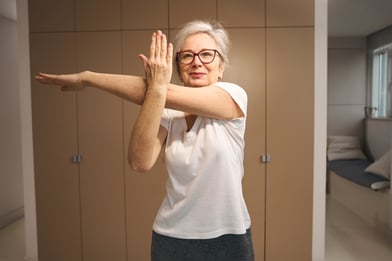 Anyone and everyone can benefit from having better balance. From professional athletes to the active aging population, balance plays a critical role in everyday life. Whether a professional gymnast is flipping on a beam, or a senior is simply trying to lower their risk of falling, improving balance starts with two things: identifying
Anyone and everyone can benefit from having better balance. From professional athletes to the active aging population, balance plays a critical role in everyday life. Whether a professional gymnast is flipping on a beam, or a senior is simply trying to lower their risk of falling, improving balance starts with two things: identifying .jpg?width=426&height=284&name=GettyImages-623825560%20(1).jpg) Why 10,000 steps a day?
Why 10,000 steps a day? 
![IMG_0169[1] (edited) (1)](https://wellness.nifs.org/hs-fs/hubfs/IMG_0169%5B1%5D%20(edited)%20(1).jpg?width=471&height=325&name=IMG_0169%5B1%5D%20(edited)%20(1).jpg) Want to get a full body workout without the aches and pains of traditional exercise? Aqua exercise could be perfect for you! This low impact exercise is for people of all ages and varying physical abilities. Aqua exercise is especially great for the active aging community. Common workouts performed on land such as walking, running, and weightlifting, are important for building strength and endurance, but these workouts can be strenuous on the joints, ligaments, and bones. There are many ways to exercise in the water and you can do it with or without any equipment. Moving under water is a full body exercise, working your muscles in every possible direction with decreased rick of injury due to less impact and strain. With the help of
Want to get a full body workout without the aches and pains of traditional exercise? Aqua exercise could be perfect for you! This low impact exercise is for people of all ages and varying physical abilities. Aqua exercise is especially great for the active aging community. Common workouts performed on land such as walking, running, and weightlifting, are important for building strength and endurance, but these workouts can be strenuous on the joints, ligaments, and bones. There are many ways to exercise in the water and you can do it with or without any equipment. Moving under water is a full body exercise, working your muscles in every possible direction with decreased rick of injury due to less impact and strain. With the help of 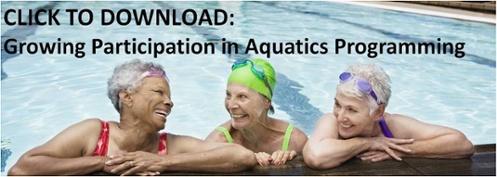
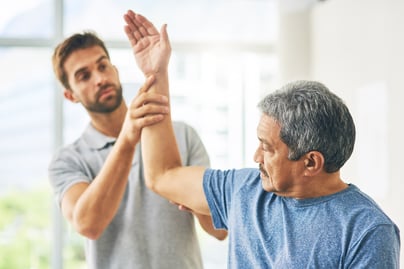 Arthritis is an increasingly common condition that refers to 100 different types of diseases, affects all age groups and affects 1 in 4 adults, equating to 80 million people in the United States. The most common form seen is osteoarthritis or degenerative joint d
Arthritis is an increasingly common condition that refers to 100 different types of diseases, affects all age groups and affects 1 in 4 adults, equating to 80 million people in the United States. The most common form seen is osteoarthritis or degenerative joint d
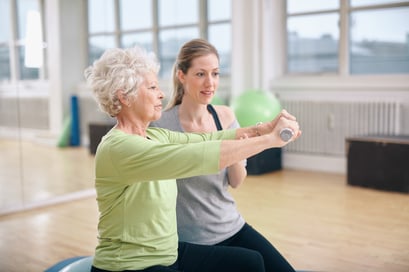 Working on one’s strength, agility, form, balance and flexibility are all so very important. Building/working on one’s strength helps prevent or lessen an injury. Using weights helps to strengthen the muscles. That being said, working the same muscles every day is not beneficial. Muscles need time to recover. Doing repetitive movements breaks the muscles down and causes wear and tear which leads to injury.
Working on one’s strength, agility, form, balance and flexibility are all so very important. Building/working on one’s strength helps prevent or lessen an injury. Using weights helps to strengthen the muscles. That being said, working the same muscles every day is not beneficial. Muscles need time to recover. Doing repetitive movements breaks the muscles down and causes wear and tear which leads to injury. 
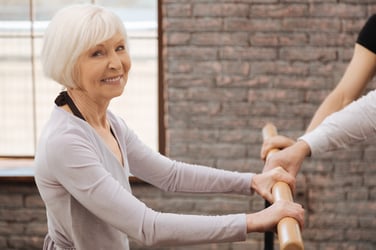 Barre, a fitness regimen, has recently gained a lot of popularity over the years. This low-impact exercise does not require any fancy, expensive equipment and people of all ages can do it. It is a workout that combines elements of Ballet, Pilates, and Yoga. It focuses on low-impact, high repetition, and small isometric movements to strengthen and tone your body.
Barre, a fitness regimen, has recently gained a lot of popularity over the years. This low-impact exercise does not require any fancy, expensive equipment and people of all ages can do it. It is a workout that combines elements of Ballet, Pilates, and Yoga. It focuses on low-impact, high repetition, and small isometric movements to strengthen and tone your body.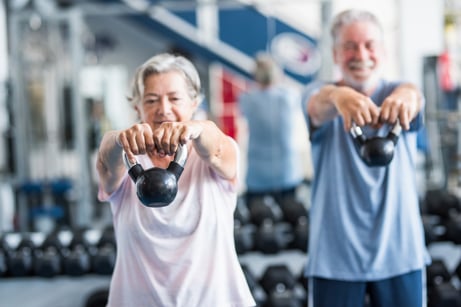 High intensity interval training (HIIT) sounds like something that is best for the 20-40 year old or athletes, however research begs to differ. Studies show that high intensity interval training is good for all ages, even if there are chronic health issues and you’re not a lifelong exerciser. In fact, HIIT workouts may be able to
High intensity interval training (HIIT) sounds like something that is best for the 20-40 year old or athletes, however research begs to differ. Studies show that high intensity interval training is good for all ages, even if there are chronic health issues and you’re not a lifelong exerciser. In fact, HIIT workouts may be able to